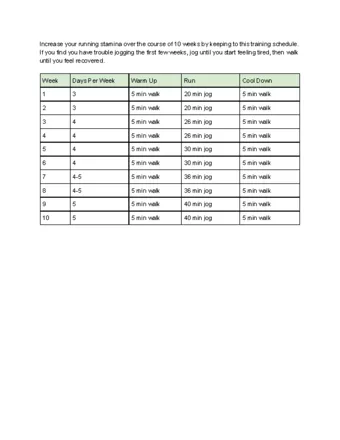Maffetone Low Heart Rate Marathon Training
Maffetone low heart rate marathon training optimizes endurance by focusing on aerobic development. It enhances efficiency and builds stamina.
Are you aiming to improve your marathon performance through a holistic approach that prioritizes long-term success over quick gains? Maffetone low heart rate training could be the solution you’re seeking. By maintaining a low heart rate during workouts, this method enhances your aerobic capacity, enabling you to run longer distances with greater ease.
Let’s delve deeper into how this training regimen can help you achieve your marathon goals while keeping your body in peak condition.

Credit: extramilest.com
What Is Maffetone Low Heart Rate Training?
Maffetone Low Heart Rate Training, also known as MAF training, is a method of endurance training developed by Dr. Philip Maffetone that aims to improve athletic performance and overall health by keeping the heart rate within a specific low range during exercise. This approach prioritizes efficient fat metabolism and reduces the likelihood of overtraining and injury.
The Principles Behind Maffetone Low Heart Rate Training
MAF training is based on the principle that by keeping your heart rate within a low, aerobic zone, you can optimize fat metabolism and develop a strong aerobic base. The training focuses on building aerobic fitness while avoiding the negative effects of chronic stress and overtraining. This method emphasizes individualized heart rate zones, allowing athletes to train specifically at their optimal fat-burning capacity.
Benefits Of Training At A Low Heart Rate
Training at a low heart rate offers a range of benefits, including improved fat metabolism, increased aerobic capacity, reduced risk of overtraining and injury, enhanced endurance, and better overall health. By training at a lower intensity, athletes can build a strong aerobic foundation, which can ultimately lead to improved performance in endurance events such as marathons.

Credit: storiesbystephen.com
Determining Your Maximum Aerobic Heart Rate
Calculating Your Maximum Aerobic Heart Rate
It’s crucial to accurately determine your maximum aerobic heart rate for efficient Maffetone low heart rate marathon training. To calculate your maximum aerobic heart rate, simply subtract your age from 180.
Factors That May Affect Your Maximum Aerobic Heart Rate
- Stress
- Sleep quality
- Diet
- Weather conditions
Implementing Maffetone Low Heart Rate Training
Setting Your Training Zones Based On Your Maximum Aerobic Heart Rate
Calculate your maximum aerobic heart rate using the formula: 180 – your age. Consult a professional for accurate guidance.
Create training zones using this formula and stay within these zones to optimize fat burning.
Designing Your Training Plan
Create a structured plan incorporating low heart rate training, gradually increasing duration and intensity.
Include rest days to allow your body to recover and adapt to the new training regimen.
Adjusting Your Training Intensity As You Progress
Monitor your progress regularly and adjust training intensity based on improvements in fitness levels.
Ensure each session challenges you while still keeping your heart rate within the designated zones.

Credit: www.runandbecome.com
Tips For Successful Maffetone Low Heart Rate Training
This concise guide provides valuable tips to succeed in Maffetone low heart rate marathon training, optimizing performance and endurance. These strategic insights help athletes to train effectively while maintaining a low heart rate for optimal results.
Consistency And Patience
Consistency is the key to success when following the Maffetone low heart rate training. Patience is crucial as it may take time for your body to adjust to the new training method. Embrace the process and stay committed to the program.
Monitoring Your Heart Rate During Exercise
It’s essential to monitor your heart rate throughout your training sessions. Invest in a reliable heart rate monitor and keep your training intensity within the prescribed Maffetone zone. This will maximize the effectiveness of your training and help prevent overtraining.
Listening To Your Body’s Signals
Pay close attention to your body’s signals during your workouts. Listening to your body will help you identify any signs of fatigue, stress, or overexertion. Adjust your training accordingly to ensure that you’re not pushing beyond your body’s limits.
Potential Challenges And How To Overcome Them
Embarking on a Maffetone Low Heart Rate Marathon Training can be a transformative journey for runners. However, it’s important to acknowledge that there may be potential challenges along the way that can test your determination and commitment.
Transitioning From High-intensity Training To Low Heart Rate Training
Making the switch from high-intensity training to low heart rate training can seem daunting at first, but with the right mindset and approach, it can be a smooth transition.
- Gradual progress: Start by gradually reducing the intensity of your workouts over a couple of weeks. This will allow your body to adapt to the new training approach without causing unnecessary stress.
- Focus on technique: Use this transition period to focus on improving your running technique. Pay attention to your form, stride, and cadence. By refining your technique, you can maximize efficiency and minimize the risk of injury.
- Patience and persistence: Remember, it takes time for your body to adjust to a different training method. Be patient with yourself and trust the process. Stay committed to low heart rate training, and you’ll gradually see improvements in your performance.
Dealing With Potential Plateaus And Setbacks
Even with meticulous training, plateaus and setbacks can occur during your low heart rate marathon training. Here’s how you can overcome these challenges:
- Assess your training plan: Take a step back and evaluate your training plan. Are you following the principles of Maffetone Low Heart Rate Training correctly? Are you incorporating sufficient rest and recovery periods? Make any necessary adjustments to ensure you are on the right track.
- Monitor your progress: Keep a record of your workouts, heart rate, and running stats. This data will help you identify patterns and potential areas for improvement. Stay accountable to your training and make necessary modifications as needed.
- Seek support: Reach out to fellow runners or join online communities who are also following the Maffetone Low Heart Rate Training method. Sharing experiences, tips, and strategies can provide valuable insights and keep you motivated during challenging times.
Staying Motivated Throughout The Training Process
Maintaining motivation over the course of your Maffetone Low Heart Rate Marathon Training is crucial for long-term success. Here are some strategies to help you stay motivated:
- Set short-term and long-term goals: Break down your training journey into smaller milestones and celebrate each achievement along the way. Having both short-term and long-term goals will give you a sense of purpose and progression.
- Variety in training: Keep your training sessions fresh and exciting by incorporating different types of workouts. Alternate between steady-state runs, interval training, cross-training, and strength exercises. This variety will help prevent boredom and maintain your interest in the training process.
- Visualize success: Imagine yourself crossing that marathon finish line with a smile on your face. Visualizing your goals can help with motivation and keep you focused during challenging moments.
By acknowledging the potential challenges and having strategies in place to overcome them, you’ll be well-prepared to face any hurdles that come your way during your Maffetone Low Heart Rate Marathon Training. Remember, with patience, persistence, and a positive mindset, you’ll not only conquer these challenges but also achieve your running goals.
Frequently Asked Questions On Maffetone Low Heart Rate Marathon Training
What Is Maffetone Low Heart Rate Marathon Training?
Maffetone low heart rate marathon training is an aerobic approach that focuses on maintaining a low heart rate during running to build endurance and optimize fat burning.
How Does Maffetone Low Heart Rate Marathon Training Work?
Maffetone training works by keeping your heart rate within a specific range, typically below your aerobic threshold. This stimulates the body to burn fat as fuel and enhances overall endurance.
What Are The Benefits Of Maffetone Low Heart Rate Marathon Training?
Benefits of Maffetone training include improved fat burning efficiency, increased endurance, reduced risk of injury, and the ability to train consistently without overexertion.
Conclusion
To conclude, Maffetone low heart rate marathon training offers a unique approach to endurance running, focusing on building aerobic fitness. By utilizing heart rate monitoring and a holistic approach to training, runners can improve performance while minimizing the risk of injury.
Implementing these principles can lead to better long-term results and a more sustainable approach to marathon training.







